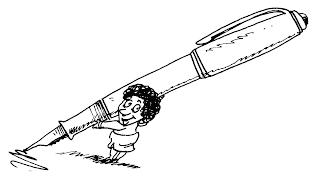I would be reviewing here some sites which may be interesting and useful for children and teachers as well, about "How things work?".

1-This link is for computer lovers:
This site provides you with computer hardware, computer software, internet and lots of other related stuff information. You may get all the necessary information you may require to know how things work?
Site link:
How stuff worksYou may get explainations about these topics at the site.
. Auto
• Business & Money
• Communication
• Computer
• Electronics
• Entertainment
• Food & Recipes
• Health
• Home & Garden
• People
• Science
• Travel
It's a good idea to sign up for their weekly newsletter, which is an easiest way to keep up with all the stuff going on in the world. You may select the topic you like to know about from a given list.
*
Get newsletter*
Reference link takes you to the page, where you can get informations about: Geography, History, Humanities, Industry & Technology, Life Science, Physical Science & Math, Recreation, Social Science.

2-
The MadSci Network is a site, where people can ask questions and learn more about the world around them. It has evolved into an interactive science teaching and community outreach tool, staffed and maintained by volunteer scientists and engineers from around the world.
The MadSci Network made its debut in September of 1995 as part of
Washington University's,
Young Scientist Program, a student-run organization dedicating to improving science literacy among K-12 students in St. Louis.
The MadSci Network fields questions in 26 different subjects, covering topics in astronomy, the biological sciences, chemistry, computer science, earth sciences, engineering, and physics. In 1999 alone, more than 900 scientists volunteered their time to answer more than 25,000 questions from K-12 students and the general public.
Main focus has been their free Ask-An-Expert service, which receives 90-150 questions a day from visitors in the U.S. or as far away as Malaysia, Chile and even Antarctica. The people asking questions are as young as 4 years to as old as 88 years of age. Nearly 800 scientists, also globally distributed, provide answers to your questions. The interactions with K-12 students work advantageously, both for the purposes of science education, and for the purpose of increasing their computer literacy.
More about the site:
IntroductionThe MadSci site has received notoriety from organizations including the U.S. Department of Education, Science magazine, New Scientist, and the BBC.
If you have an email address, access to the WWW and an interest in telling others about the wonders of science, then join the team.
Information and an online sign-up form live at:
Join here3-
Ask Dr. Universe is a site where Dr. Universe tackles all questions, experts in just about everything. From global warming to neural networks. From Jane Austen to soil nematodes. From cow belching to quasars. You can ask questions at any topic, and search the site for many facts of life.
Ask Dr. Universe is brought to you by University Relations at Washington State University and is made possible through generous support from Microsoft Corporation.
4-
Stanford University presents "Alliance for Innovative Manufacturing"(AIM) is a continuous learning community of industrial professionals, academics, and students passionate about the making of real things that improve people's lives. It is a cooperative venture among Stanford University's Graduate School of Business, School of Engineering, and member industrial firms.
"
(AIM) Alliance for Innovative Manufacturing"has developed an introductory website for kids and adults showing how various items are made. It covers over 40 different products and manufacturing processes, and includes almost 4 hours of manufacturing video. It is targeted towards non-engineers and engineers alike. Think of it as your own private online factory tour, or a virtual factory tour, if you wish."Includes products like candy, cars, airplanes, or bottles - or if you've been interested in manufacturing processes, like forging, casting, or injection molding, then this is the place to search.
AIM site link Sign up for AIM e-mail list at the site home page.
5-
How products are made? explains and details the manufacturing process of a wide variety of products, from daily household items to complicated electronic equipment and heavy machinery. The site provides step by step descriptions of the assembly and the manufacturing process (complemented with illustrations and diagrams) Each product also has related information such as the background, how the item works, who invented the product, raw materials that were used, product applications, by-products that are generated, possible future developments, quality control procedures, etc.
For example, you can find here descriptions of Air Bag, Air Conditioner, Artificial Snow, Automobile, Battery, Blue Jeans, Chewing Gum, Coin, Compact Disc, Credit Card, DVD Player, Fireworks, Hologram, Jet Engine, Laser Pointer, Liquid Crystal Display (LCD), Nuclear Submarine, Paint, Popcorn, Refrigerator, Telephone, Television, Temporary Tattoo, Vaccine, Vacuum Cleaner or Watch.
This searchable site is suited for a general audience and the descriptive language of this reference material is easy to understand and to follow. So go ahead we invite you to learn about How Products Are Made!
There is a list from A to Z catagory, but if you find it difficult to search for your product, there is a search box at the home page, where you can enter the product name and click "Go" to get the instant results. There are also some inventors biographies which might be interesting to read.
Site link:
How products are made?









